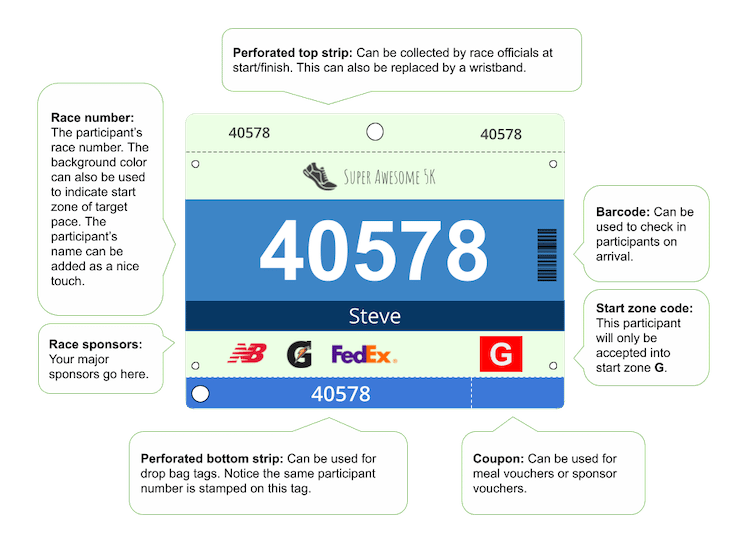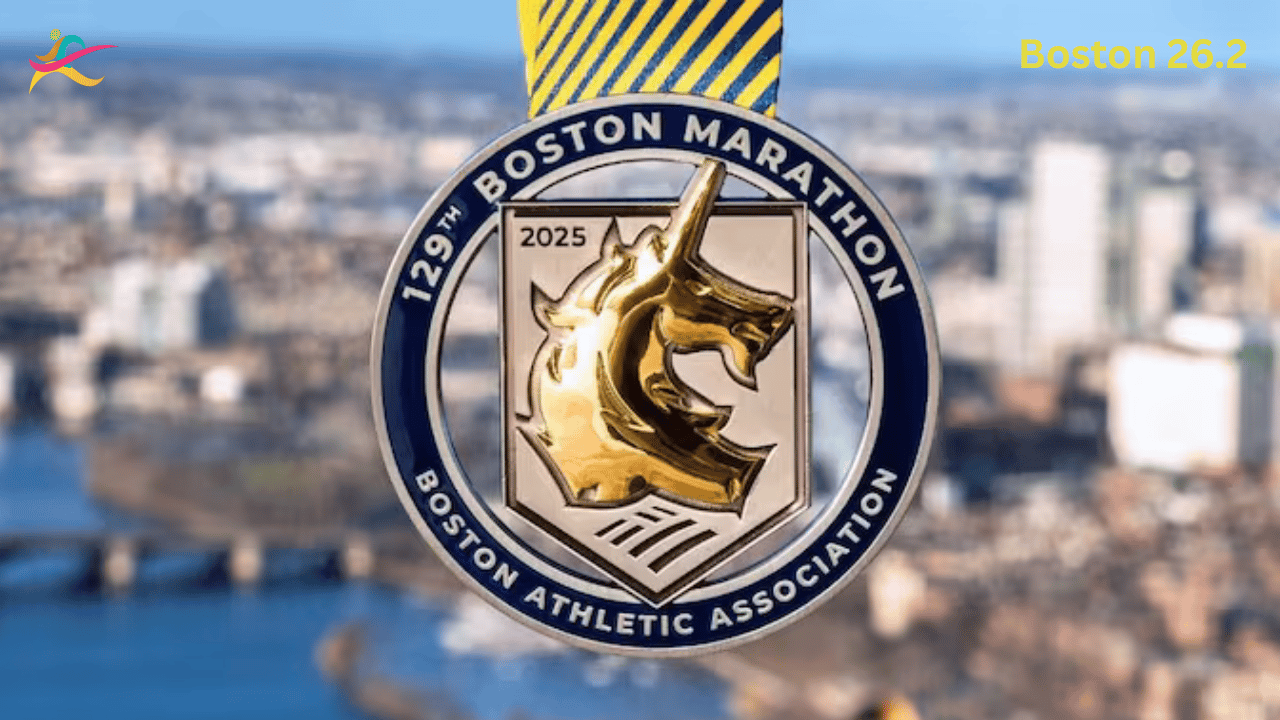- Strides 'n' Miles
- Posts
- A Mile at a Time to Personal Victory! Happy July 4th 🎇
A Mile at a Time to Personal Victory! Happy July 4th 🎇

Welcome to July ‘25 version of 'Strides ‘n’ Miles' - a monthly newsletter by Traxamo. As we celebrate the spirit of independence this July 4th, let's also honor the freedom and joy that running brings to our lives. Just like the fireworks that light up the sky, every stride we take is a burst of energy and determination. Whether you're hitting the trails or pounding the pavement, remember that each mile is a step towards personal victory. Happy July 4th 🎇 and Happy Running 🏃♂️
In this month’s edition:
Enjoying this month’s newsletter? We want to reach 1000 curious runners & industry professionals by 2025. So, don’t keep it a secret. Share this newsletter with anyone you believe will enjoy it as much as you do. Happy Running!!!
MEME CORNER 😆
World Marathon Majors Corner
The Boston Athletic Association (B.A.A.) recently announced that starting with the 2027 Boston Marathon, qualifying times from marathons with a net-downhill of 1,500 feet or more will be adjusted: a 5-minute penalty for courses with 1,500–2,999 feet of drop, and a 10-minute penalty for 3,000–5,999 feet. Courses with 6,000 feet or more net-downhill will not be accepted for qualification. These changes aim to ensure fairness among qualifiers, as downhill courses offer a time advantage1.
Three tips for runners planning for a Boston Qualifier (BQ) race:
Choose a qualifying race with less than 1,500 feet net-downhill to avoid time penalties1.
Train specifically for your target race profile (flat, rolling, or hilly) to maximize performance.
Confirm your race is certified and meets all B.A.A. qualifying requirements before registering
Read the full announcement here.
TECH CORNER
What is crowd science and what role it plays predicting marathon flow or even deciding how many runners can participate in a race? Traxamo recently sat down with Marcel Altenburg, senior lecturer in crowd science at Manchester Metropolitan University, explains how crowd science helps both race organizers and runners by improving race logistics and participant experiences. He shares insights into how marathons are planned, how start waves and corrals are determined, and how crowd management can increase race capacity. Marcel also discusses how race organizers use predictive algorithms to ensure safety and efficiency throughout the course and how these principles extend beyond running events.
Key Topics Discussed:
How Crowd Science Improves Runner Experience : Runners benefit from optimized start times and corral placements, ensuring smooth movement from start to finish. Predictions about density, overtaking patterns, and hydration stations help organizers create a better race experience.
The Role of the Start Right Algorithm for Race Organizers : The algorithm helps race directors assign runners to waves and corrals based on pace, past race times, and expected conditions. It predicts how many runners will cross the finish line at peak times, enabling organizers to prepare medical and volunteer support.
Increasing Race Capacity While Maintaining Safety : Adding more time or space isn’t always the best way to increase participants. Instead, better runner order and wave management can allow more people to run. Race organizers can adjust race logistics dynamically to ensure safety while allowing more participants.
Real-Time Adjustments and Crisis Planning for Races : Unexpected challenges like transportation delays, protests, or weather changes require quick adaptations. The system allows race directors to shift medical teams, aid stations, and crowd control measures in real time.
Lessons for Runners and Race Organizers Beyond Running Events : Marcel explains how the same crowd science principles apply to concerts, stadiums, expos, and airports, improving overall crowd management. Runners can appreciate why races structure waves and corrals in specific ways, ensuring a fair and smooth race experience for everyone.
TRAINING & NUTRITION CORNER

Image Credit - Runner’s World
Recent news for runners highlights personalized nutrition, real-time glucose monitoring, and smoothie-based fueling. Experts stress periodized carb intake, hydration strategies, and gut training for endurance. Whole foods, key micronutrients, and balanced fats are crucial. Research links under-fueling and low fat/fiber to higher injury risk, especially for women. Here are some recent highlights from the world of training and nutrition for runners:
Eliud Kipchoge’s Use of Real-Time Glucose Monitoring for Marathon Nutrition
Marathon legend Eliud Kipchoge uses a biosensor called Lingo to monitor his glucose in real time, helping him and his nutritionist fine-tune fueling before, during, and after runs. This data-driven approach has allowed him to adjust carbohydrate intake, especially in the week leading up to major races, for optimal performance. Read more here
Smoothie Diets Gain Popularity Among Elite Runners
Smoothies are increasingly used by Olympic-level and recreational runners for pre-run fuel and post-run recovery. They offer rapid nutrient absorption, hydration, and anti-inflammatory benefits, with experts recommending a 3:1 carbohydrate-to-protein ratio for recovery. Read more here
Periodized Nutrition: Tailoring Carbs to Training Intensity
New training strategies emphasize “periodized nutrition,” where runners consume more carbohydrates on high-intensity days and less on lower-intensity days. This approach improves metabolic flexibility, fat oxidation, and performance at various intensities without compromising running economy. Read more here
Hydration Strategies for Summer Running
With rising temperatures, there is renewed focus on hydration: when, what, and how much to drink before, during, and after runs. New advice covers electrolyte management, signs of dehydration, and practical solutions for hot-weather training. Read more here
Mental Strategies and Warm-Ups for Better Training
Beyond physical nutrition, mental tricks and structured warm-ups are highlighted as key for successful runs and race-day performance. These include visualization, positive self-talk, and dynamic warm-up routines to reduce injury risk and improve outcomes4.
COMMUNITY SPOTLIGHT
Running USA is a nonprofit organization dedicated to advancing the growth and success of the running industry in North America. Rather than organizing races themselves, they serve as a central hub for race directors, event organizers, sponsors, vendors, and athletes by providing resources, research, and networking opportunities.
Traxamo recently sat down with Jay Holder, Executive Director of Running USA. Jay shared how Running USA supports the industry through research, education, and its annual conference, and highlighted new trends like increased engagement from younger runners and the growing importance of race-day experiences. The conversation also covered rising event costs and the industry’s resilience amid economic uncertainty, plus Running USA’s efforts to foster collaboration and best practices among race organizers and vendors. Enjoy the episode! Here are the highlights from our conversation:
1. Running USA’s Mission and Community Impact
Jay Holder describes Running USA as a nonprofit dedicated to engaging, educating, and elevating the running event industry. The organization acts as a facilitator, connecting event organizers, vendors, and industry professionals, and providing resources such as insurance, music licensing, and an annual industry conference to foster collaboration and knowledge sharing
2. Industry Research and Data Trends
Running USA conducts extensive research, including the annual Global Runner Survey and finisher data analysis. Their latest findings highlight a significant post-pandemic running boom, with race participation—especially in marathons—exceeding pre-pandemic numbers. The marathon distance saw a 17% year-over-year increase in finishers, and there’s notable growth in the 18–24 age demographic, which bodes well for the future of the sport.
3. Focus on Economics and Event Costs
A major current focus for Running USA is analyzing the economics of race production. They are surveying race directors to break down costs by event size, from medals and swag to staffing and logistics, aiming to provide actionable insights about how costs scale and how sponsorship values are evolving in the industry.
4. Value of Experience in Modern Races
Jay emphasizes that today’s runners expect more than just a start and finish line. The overall race experience—including swag, entertainment, and social aspects—has become a critical factor in attracting and retaining participants. This shift is driving event organizers to innovate and enhance every aspect of the runner’s journey.
5. Navigating Economic Uncertainty and Industry Resilience
Despite rising costs and economic uncertainty, Jay remains optimistic about the running industry’s resilience. He points to historical trends showing that running remains a cost-effective and accessible form of exercise, even during economic downturns. However, tariffs and increased production costs for race materials and shoes are “wild cards” that the industry continues to monitor closely.
WHAT’S NEW AT TRAXAMO
In our recent conversation with Tyler McGraw, founder of RunVirt, we had the opportunity to explore the fascinating world of race bib manufacturing and the innovations reshaping this niche industry. Based in Anderson, South Carolina—affectionately known as "Bib Town USA"—Tyler brings a unique perspective, having entered the running industry not as a runner, but as someone passionate about manufacturing and product development. Our discussion delved into his unconventional journey, the evolution of the race bib industry, and how RunVirt is driving efficiency, sustainability, and creativity in participant identification products. Stay tuned for that fascinating conversation coming in coming weeks in July!!

Image Credit - Race Directors HQ
Step into the heart of Boston with my upcoming podcast mini series, Boston 26.2. In this special run of episodes, we’ll be chatting with Boston Marathon runners, event organizers, charity partners, and the vibrant ecosystem that brings this legendary event to life. From the iconic start in Hopkinton to the electric finish on Boylston Street, we’ll explore the stories, challenges, and community spirit that define the world’s oldest annual marathon. Whether you’re a lifelong runner or a curious fan, join us as we celebrate the passion, perseverance, and people behind Boston’s 26.2 miles.


Reply